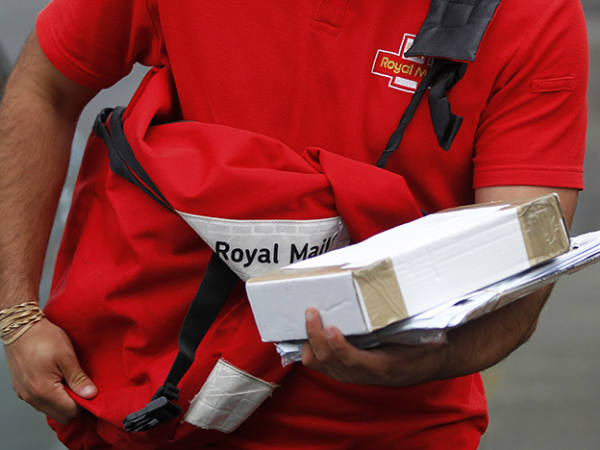10. JAMES HALSTEAD
Flooring specialist James Halstead (JHD) may have suffered from the tough trading conditions in the last six months of 2013, but it is still on course to deliver its 38th successive year of dividend increases, a testament to the board’s confidence in the business model. In fact, a rather dreary performance towards the calendar year end, as customers ran down inventories at a typically slack time of the year for business, was reversed in January, when sales grew by 8 per cent from a year earlier. Fortunately, sales in the UK, which account for around 35 per cent of group turnover, have held up pretty well, gaining 5 per cent, and double digit gains have been registered in Spain and Canada. Set against this, nearly a fifth of group sales are made in Australia, and sales here are just treading water as government-led refurbishment spending tracks sideways.
James Halstead has shown its ability to weather the storm over the past five years, and has trimmed back on non-core activities such as the Phoenix Distribution motorcycle accessories business. However, much of this pedigree performance is reflected in the high rating of 18 times forecast earnings, although given the decent dividend, the shares are worth hanging onto. Hold. JC
9. OPTIMAL PAYMENTS
Optimal Payments (OPAY) makes a good living by processing transactions for the likes of Caesars and 888. It drove a nine-fold rise in pre-tax profits last year, to almost $33m (£19.7m). That reflected sales growth of 54 per cent at Neteller, its e-wallet and pre-paid card business, and strong demand for Netbanx, its payment-processing platform.
Its gains may well continue. Starting this summer, it will be able to process payments for EU merchants directly, avoiding the need to have a bank act as an intermediary and charge a fee. That should make it more competitive and broaden its client base beyond higher-risk sellers.
Optimal also plans to launch new mobile products and open a US office this year. It’s targeting states such as Nevada and New Jersey where online gambling is now legal, and where it may soon be, such as California. However, the downside of expansion will be substantial staff, technology and setup costs this year, following its marketing expenses doubling last year to $8m.
Its shares have tripled since the start of last year, and, with cash stripped out, trade on 21 times broker Canaccord Genuity’s forecast earnings. That’s certainly pricy, but given sizeable growth opportunities in the US and Europe, we expect further upside. Buy. TM
8. PLUS 500
Since floating on Aim in July at 115p, Israeli group Plus500 (PLUS) – which offers an online contracts for difference (CFD) retail trading platform – hasn’t stopped motoring. CFD trading allows investors to speculate on market price movements without the expense of owning the underlying asset and that’s boosting the popularity of this form of trading. It’s also a trend that Plus500 has been highly effective at capitalising on, with customers being especially attracted by the fact that they don’t have to pay commissions.
Growth metrics are certainly impressive. Earlier this month, for example, management reported that first-quarter revenue had jumped 207 per cent year on year – that beat broker Liberum’s forecast by 61 per cent. Other good news included a 63 per cent hike in the number of new customers during that period, a 24 per cent fall in average user acquisition costs and a 108 per cent rise in average revenue per user. Plus500 is growing UK market share fast, too, and is also rolling out overseas – it’s in Australia and has aspirations in such places as Canada, Hong Kong and Singapore. Yet the company is highly efficient – broker Liberum estimates revenue per employee at around $2m (£1.2m), compared with about $0.6m at IG Group (IGG).
The shares have soared over five-fold since the flotation yet there’s a decent 4 per cent prospective yield, based on Liberum’s 2014 estimates, and the shares (adjusted for cash) still trade on under 14 times forecast earnings. That’s inexpensive for its peer group and we reiterate our buy tip (600p, 20 March 2014). Buy. JA
7. GW PHARMACEUTICALS
Specialty pharma group GW Pharmaceuticals (GWP) is the kind of stock investors’ dreams are made of. Failing to gain much traction in London, the group, which develops cannabis-derived drugs, applied for an additional listing on the US Nasdaq exchange towards the end of last year. In January it confirmed it had raised more than £50m as it found itself in the midst of a flurry of biotechnology fundraisings across the Atlantic.
More good news came in February in the form of orphan drug status for its product Epidiolex in the treatment of Lennox-Gastaut syndrome, a rare and severe form of childhood epilepsy. The result should see marketing and regulatory approval fast-tracked by the Food and Drug Administration (FDA) in the US, given the lack of existing treatments for such rare conditions.
The group is also making progress on alternative cannabis-derived products for the treatment of schizophrenia and type two diabetes, but the shares have come off in the last couple of weeks after the biotechnology ‘bubble’ looks to have burst. We advised locking in some profits from GWP last November, and seeing as the biotechnology market looks set for a global correction, we aren’t motivated to upgrade our view yet. Hold. HR
6. ABCAM
Since releasing half-year results and exposing sluggish Asian sales, medical-proteins supplier Abcam (ABC) has seen its share price crash, tumbling 12 per cent on the morning the figures were first reported. While underlying sales still managed to grow 9 per cent in Japan during the six months to December, this did not live up to analysts’ expectations and even Abcam was surprised, having previously identified US sequestration as the bigger threat to growth last year.
But efforts will still be made to consolidate the group’s position in China this year, with a new office in Shanghai due to open. Chief executive Jonathan Milner has said he is focused on ‘getting it right’ in Asia and subsequently picked up an extra £1m worth of new shares in the group after seeing the price fall and present a cheaper entry point.
Before dropping to its current price of 383p, the shares carried a pretty punchy rating of 27, prompting us to maintain our bearish stance and recommend offloading more of the stock. Considering emerging markets remain crucial to the future growth of Abcam and certain parts of Asia are failing to meet ambitious expectations, the shares probably have further to fall. Sell. HR
5. PURECIRCLE
With obesity levels rising around the world and diabetes becoming ever more prevalent, governments are looking at ways to combat our bulging waistlines and some, like Mexico last year, are introducing taxes on sugary drinks. This has caught the eye of the world’s biggest food and drinks makers who are now looking for better ways to cut sugar from their products. Increasingly, they’re turning to a zero calorie natural sweetener derived from the stevia plant, and a company called PureCircle (PURE), which produces the stuff.
PureCircle cultivates stevia from which it produces highly specialised low and no-calorie sweeteners and blends, helping companies like Coca-Cola achieve sugar-free sodas, without the use of artificial additives. The company had a rocky period a few years ago, but is now experiencing double digit sales growth, driven by a surge in volumes. Operational gearing is finally kicking in, so these higher volumes are translating into serious bottom-line growth. The shares have performed well over the past year, and after rising 40 per cent on our buy tip, we recommended taking profits in January. The reason being that, while stevia is becoming increasingly mainstream, it’s still early days and the shares are prone to volatile swings. Hold. JB
4. MONITISE
Mobile banking and payments specialist Monitise’s (MONI) path to profitability has taken a surprise twist. After increasing sales by more than two-thirds and its subscriber base by 40 per cent last year, it raised £109m in a share placing last month to fund a transition away from licensing towards a subscription-based model.
Monitise believes that will lower its upfront costs and attract more clients to its network in the long term. In fact, it’s aiming to grow its registered user base seven-fold to 200m by mid-2018. But the strategy has its drawbacks. Monitise expects capital spending to more than double this year, and rise further to £30m-£40m in 2015. It also slashed this year’s sales growth forecast from 50 to 40 per cent, and highlighted that cash losses in the current half year could surpass last half’s decline.
Moving the goalposts was a bold move, but investors don’t seem overly concerned. Monitise’s shares have climbed 85 per cent in the past year, and have tripled since our 2010 buy tip. Perhaps they’re betting that steeper losses now will translate into a more robust business in the future. Given Monitise’s strong growth, high-profile partners and blue-chip client base, we’re inclined to agree. Buy. TM
3. SONGBIRD ESTATES
With a market capitalisation of over £1.6bn, Songbird Estates (SBD) is not your average find on London’s junior market, and its recent performance has been above average too. As two-thirds owner of London’s iconic Canary Wharf office, retail and residential development, the group is in a prime position to exploit the strong demand for property in and close to the centre of London. However, there is still a lot of debt on the books, although it’s worth noting that the group portfolio of properties was revalued last year by £856m, lifting net asset value by an astonishing 38 per cent. Rental income is also expected to accelerate as a result of the gap between existing rents at £38.5 per sq ft and new lettings at £48.5.
The group is also expanding its geographical presence with a 1.4m sq ft residential development at the Shell Centre on the South bank, albeit subject to a planning enquiry. And adjacent to Canary Wharf, a planning application has been submitted for a 4.9m sq ft development for office, residential and retail use. In fact, the 11m sq ft in the development pipeline is the largest of any London developer. At 258p, shares in Songbird have more than doubled from our buy tip (116p, 25 October 2012) but with such a large development pipeline, potential rental uplifts, and strong demand, we see little reason to change that view. Buy. JC
2. QUINDELL
Insurance claims outsourcing company Quindell (QPP) was admitted to Aim in 2011 under the stewardship of founder and executive chairman Robert Terry. Mr Terry has previous in this space, having founded insurance software venture Innovation Group which floated amid much fanfare in 2000 only for the shares to crash a few years later. That history, together with Quindell’s penchant for dilutive share placings and voracious appetite for acquisitions, injected an element of unease into the Quindell story, at least initially.
But it’s hard to argue with the numbers – recent full year results saw cash profits more than double as impressive new business wins drove growth. The next great hope is telematics, or black-box technology, which tells your insurer how you drive and allows premiums to be adjusted accordingly. Quindell recently announced the world’s largest insurance telematics contract to date with RAC. Never one to stand still, Mr Terry is planning to take Quindell on to the main market this year, potentially even the FTSE 100 if its market capitalisation is large enough.
Quindell is not for the fainthearted but trading on only 11 times this year’s earnings and 8 times next year’s, the shares don’t look overheated (unlike Innovation Group’s on 125 times back in 2001) and we stay buyers. KG
1. ASOS
Asos (ASC) is arguably the UK’s most successful online retail story. The company has seen its share price more than double over the past three years, driven by booming sales across the globe as its clothes and accessories have taken the fashion world by storm. But since the start of the year, the share price has sagged 34 per cent.
So what happened? Two things. The first was a ‘slowdown’ in the UK, with ‘just’ 21 per cent growth in the second quarter, coupled with currency headwinds affecting top line performance overseas. The second is that Asos is in the middle of a significant investment programme to push overseas expansion and cope with burgeoning orders. With the company expected to hit £1bn of revenue earlier than expected – warehousing volumes rose 39 per cent in the first half alone – it has had to bring forward the investment timetable, which means profit this year will take a hit – first half earnings have already declined 22 per cent. Meanwhile, start-up costs in China will total £9m for the full year.
However, the end result will see capacity more than doubled and, by the second half of fiscal 2015, it should be business as usual. China is a difficult market to crack, so there is a degree of execution risk here, but success would be highly lucrative. Bear in mind, too, that sales are still growing at a staggering 34 per cent and overseas customers now account for more than 60 per cent of group revenue. As such, the recent share price weakness could offer a nice buying opportunity, albeit at extremely high risk. JB







